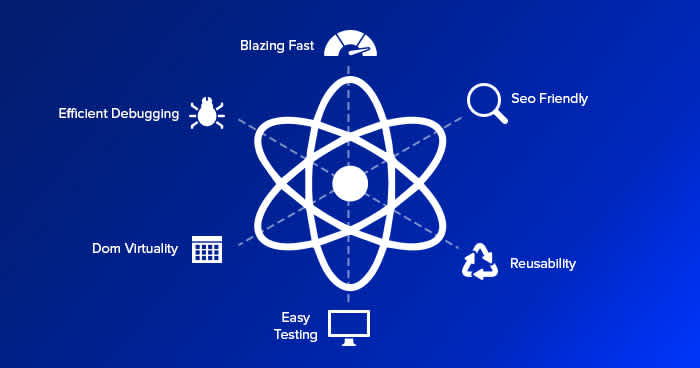Exploring the Dynamic World of React: From web development to mobile applications, React has revolutionized the way developers create dynamic user interfaces.
The Importance of React:
Bridging Web and Mobile: React's versatility enables seamless development of cross-platform applications, bridging the gap between web and mobile experiences.
Enhanced User Experience: React's component-based architecture empowers developers to create interactive, responsive, and user-friendly interfaces that captivate and delight users.
Code Efficiency and Reusability: With reusable components and a modular approach, React simplifies development, fosters code efficiency, and boosts productivity.
Thriving Community
Collaboration and Knowledge Sharing React has a strong and vibrant developer community that fosters collaboration and knowledge sharing. Developers can tap into a vast pool of resources, including online forums, documentation, tutorials, and open-source projects, to gain insights, seek assistance, and stay updated with the latest trends and best practices. The React community encourages collaboration through code reviews, contributions to open-source libraries, and sharing of reusable components. This collaborative ecosystem promotes innovation, accelerates learning, and enables developers to build high-quality React applications more efficiently
Empowering Ecosystem React is backed by a robust ecosystem that offers a wide range of tools, libraries, and frameworks to enhance development capabilities and streamline workflows. Popular frameworks like Next.js, Gatsby, and Remix leverage React to provide additional features and functionalities for building web applications. These frameworks offer benefits such as server-side rendering, static site generation, and enhanced routing capabilities. Additionally, React integrates seamlessly with other libraries and technologies, allowing developers to leverage the power of React alongside tools like Redux for state management or GraphQL for efficient data fetching. This rich ecosystem empowers developers to create sophisticated and feature-rich applications with ease, expanding the possibilities of what can be achieved with React

Unmatched Performance
Virtual DOM and Efficient Rendering One of the key strengths of React is its use of a virtual DOM, which allows for efficient rendering and updates. The virtual DOM is a lightweight representation of the actual DOM, and React leverages it to efficiently update only the necessary components when changes occur. This results in faster rendering and improved performance compared to traditional approaches. By minimizing unnecessary re-renders and optimizing the update process, React ensures a smoother user experience and better overall performance. Additionally, React's diffing algorithm further enhances efficiency by determining the minimal changes needed to update the DOM, reducing the impact on performance.
Performance Optimization Techniques React provides various techniques to optimize the performance of your applications. Some of these techniques include code splitting, lazy loading, and memoization. Code splitting allows you to split your application into smaller chunks, loading only the necessary code for each specific page or component. Lazy loading enables deferred loading of non-critical resources, improving initial page load times. Memoization, through the use of React's memo and useCallback hooks, optimizes the rendering process by memoizing the results of expensive computations. By employing these performance optimization techniques, you can enhance the speed and efficiency of your React applications, ensuring a smooth and responsive user experience.
Comparing Competitors
Angular vs. React: Gain insights into the distinctions between Angular and React, understanding their strengths, weaknesses, and suitable use cases, aiding developers in making informed technology choices.
Vue.js vs. React: Explore the unique features of Vue.js and compare them with React, providing developers with a comprehensive understanding of both frameworks and their respective benefits.
Gatsby vs Next: Both uses react under the hood.
Pros and Cons of React:
Advantages of React Harness the power of React's component reusability, allowing for modular and scalable development. Its declarative syntax enables cleaner and more readable code while ensuring efficient rendering and state management. With excellent performance and a strong developer community, React empowers developers to build robust and innovative web applications.
Considerations and Limitations While React offers numerous advantages, it's important to be aware of certain considerations and limitations. React's learning curve can be steep for beginners, requiring familiarity with JavaScript and JSX. Additionally, managing the state in larger applications can become complex, requiring the use of additional libraries or frameworks. React is primarily focused on the view layer, so it may require integration with other libraries or frameworks for full application development. Lastly, keeping up with React's frequent updates and changes in the ecosystem can require ongoing learning and adaptation. Despite these considerations, React remains a powerful and popular choice for building modern web applications.

Conclusion React has emerged as a powerful framework for building dynamic and interactive applications. With its robust community, exceptional performance, and continuous innovation, React remains a top choice for developers worldwide. Embrace the power of React, tap into its vast ecosystem, and shape the future of web and mobile application development, and the answer is NO, react is so alive.




